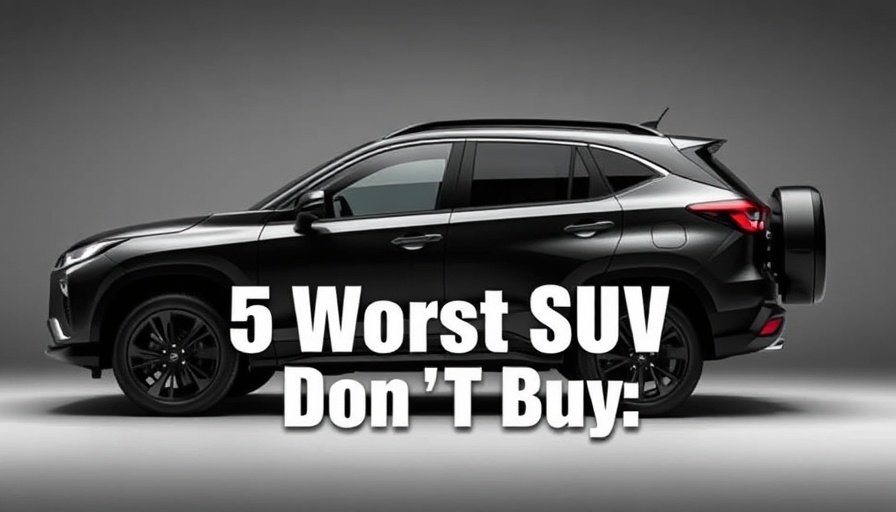
The Hidden Risks of Buying Used Cars
When it comes to purchasing a used car, it’s easy to fall in love with a vehicle’s looks or price tag, but there’s often more lurking beneath the surface. Understanding the subtle signs of malfunction, especially regarding issues like fuel leaks, can save you from costly repairs down the road. In the video 'If You See This, Don’t Buy the Car,' we analyze a 2014 Impala with an unpleasant gasoline smell. This situation explores the importance of thorough inspections and highlights a common scenario that buyers should be aware of.
In 'If You See This, Don’t Buy the Car,' the discussion dives into the issues of gasoline smells in vehicles, highlighting vital information for potential buyers.
Investigating Unusual Smells
One notable issue presented in the video is the persistent smell of gasoline in the Impala. When you notice unusual odors in a used car, it’s essential to investigate promptly. While some owners might mask odors with air fresheners, as seen with the Supernova fragrance used in the car, this approach doesn’t address the underlying problem. In this case, the owner had previously replaced the evap canister, but the smell lingered, hinting at potential leaks elsewhere in the fuel system.
Utilizing Diagnostic Tools Effectively
The car expert in the video suggests a method for detecting leaks using UV dye, which can reveal issues in a fuel system. This technique involves adding special dye to the fuel and using a UV light to spot any leaks that scare you—but help prevent you're buying a lemon. This proactive strategy allows potential buyers to identify leaks instead of facing the shock of costly repairs post-purchase.
Understanding Your Repair Costs
The video paints a dire picture of the potential costs associated with necessary repairs. The narrator discusses how issues stemming from a high-pressure fuel system can lead to extensive and costly repairs, sometimes reaching over $2,000. Understanding the implications of parts like the fuel injectors and rail, particularly in older vehicles, is vital. It emphasizes why it can be cheaper and simpler to choose models known for reliability and lower repair costs, like Toyota.
Emotional Insights for Buyers
This narrative resonates with many car shoppers who might be tempted by low mileage or appealing aesthetics. Potential buyers should resist rushing in; take a moment to evaluate the overall condition based on more than just initial impressions. Leverage inspection services, keep an eye on any unusual odors, and understand the longevity and history of car parts to shield yourself from buyer's remorse.
Future Predictions for the Used Car Market
As the video concludes, it raises concerns regarding planned obsolescence in automobile manufacturing—where companies use cheaper materials, leading to inevitable problems as cars age. With technology becoming increasingly complex and high-stakes repairs looming, future buyers may lean towards older models that still hold up over time, rather than new vehicles that come equipped with intricate but fragile systems.
Wrapping Up: What to Keep in Mind
The biggest takeaway from 'If You See This, Don’t Buy the Car' is the essential need for vigilance when buying used vehicles. It underscores the importance of conducting thorough inspections and understanding the warning signs. It’s vital to treat your car investment seriously and aim for the long-haul reliability without the burden of unforeseen costs.
So, the next time you're in the market for a used car, don't just get swept away by the price or appearance. Remember to perform detailed inspections, ask questions, and remain aware of signs that could indicate deeper issues. This approach is critical to ensure your vehicle gives you more value and less worry in the long run.
 Add Row
Add Row  Add
Add 




 Add Row
Add Row  Add
Add 

Write A Comment